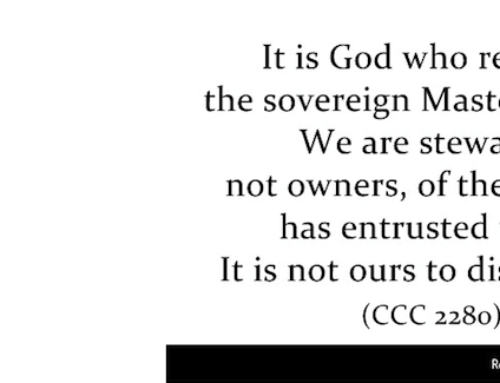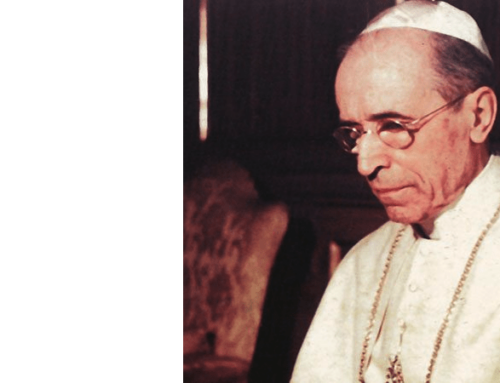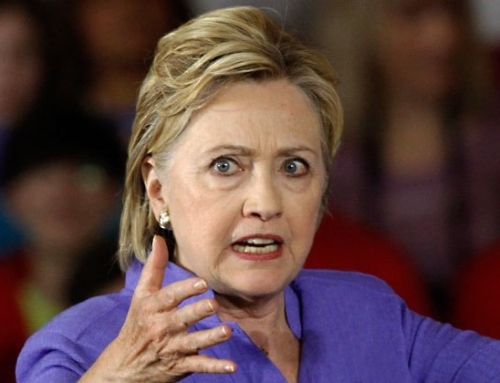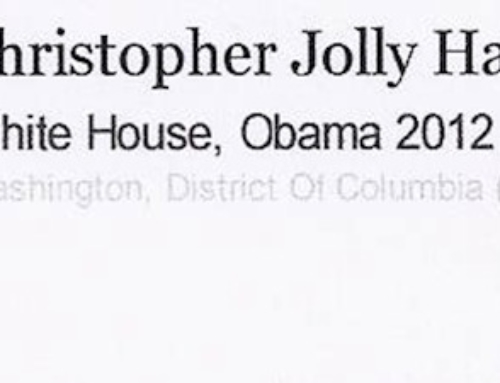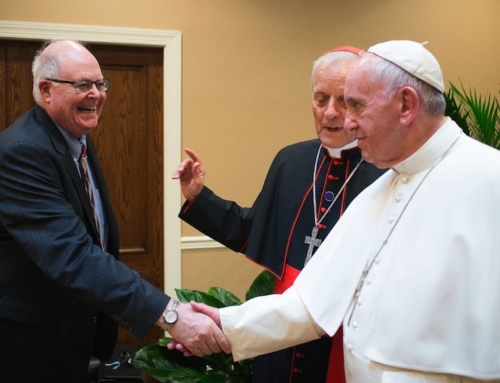by William A. Donohue
(Catalyst 5/1996)
The issue of pedophile priests has been the source of much discussion both in and out of the Catholic community. Like all incendiary issues, it has been the subject of heated analysis, much of it irrationally based. The good news is that there is finally a book that examines the issue in a scholarly and sober manner. The book is Pedophiles and Priests, published this year by Oxford University Press, and written by a veteran Penn State historian, Philip Jenkins. Jenkins is a first rate academic and, given that he is also an ex-Catholic, his book merits special attention.
The first problem with conventional thinking on this subject is that almost all of those priests who have been charged with pedophilia have been charged with the wrong offense: the term pedophile refers to adult sex with youngsters who haven’t reached puberty. Because the vast majority of alleged so-called pedophile priest cases involve teenagers, it is inaccurate to slap the term pedophilia on them. This is not to suggest for one moment that priest sex with anyone is somehow acceptable, it is simply to say that when charges are being bandied about, it is useful to speak truthfully about the nature of the charges.
Though Jenkins is an historian, he is well versed in sociology, especially the field of social problems. Social problems, he writes, are often the product of “social constructions,” which is to say that prevailing ideologies help determine which objective conditions are regarded as socially problematic. What this means is that under new lens, what was once considered mundane or merely troublesome, now appears as a crisis that demands immediate attention.
To provide my own example, take poverty. It has always existed, but only in the 1960s (when there was less of it than ever before), did it become dubbed a social problem. The same is true of women’s rights. The very same people who once resisted an Equal Rights Amendment, e.g., Eleanor Roosevelt, Judge Dorothy Kenyon, the ACLU and the League of Women’s Voters, found themselves swept away by the social changes of the 1960s and 1970s and began pressing earnestly for an amendment they previously worked to defeat. It is not that the objective condition of women had seriously deteriorated from previous decades, rather it was that a new construction of reality had emerged.
Sexual misconduct has always existed among the Catholic clergy, the non-Catholic clergy and in the general populace as a whole. What is new is the way many elites in American society began to socially construct the problem of priest sexual abuse, beginning in the mid-1980s. Again, this is not said to exculpate the guilty, but it is to say that a “moral panic,” as Jenkins terms it, did begin to evidence itself by 1985.
By the mid-1980s, several social currents that had begun in the 1960s had become institutionalized in American society. The civil rights movement of the 1960s, properly associated with the efforts of Martin Luther King, was the trigger for demands that went far beyond the goal of racial equality. In short time, virtually every segment of American society, from women to migrant farm workers, began to assert its rights and make claims against institutions and society in general. And they did so by using the weapon of the law. So, too, did those who pressed charges against priests, except it took two decades for them to do so.
Feminism took root in the 1960s, and with it came a concern for a newly discovered problem (it had always been there), namely child abuse. In the decades that followed, a whole host of abuse problems would surface, complete with victim and victimizer status. In due course, attention would focus on clergy sexual abuse.
Factionalism within the Church, as well as an adversarial media, also helped to define the contours of the problem. The disputes among politically divergent elements in the Church antedated the construction of the priest “pedophilia” problem, and when the time came for the problem to surface, both sides were ideologically prepared to weigh in with their own critiques. The media of the 1980s, which had by then become accustomed to drawing blood, also seized the moment.
Jenkins asks us to consider why there is no such term as “pastor pedophilia”? It is not for lack of pastors involved in sexual abuse, rather it has much to do with the way the issue of pedophilia has been “framed” by our social constructionists. For example, who ever heard of Tony Leyva?
In the 1980s, Leyva had abused perhaps one hundred boys in several southern states, but few of us ever learned of it. Leyva had the distinction of being a Pentecostal minister and was, therefore, not within the “frame” of those who were busy constructing reality. The same is true of the three brothers, all Baptist ministers, who were charged with child molestation in the 1990s: the public learned little about this highly unusual series of cases because it was not deemed worthy of dissemination by those fixated on Catholic scandals.
Were it not for the way the problem of clergy sexual abuse has been socially defined, the public would know that the problem is hardly confined to the Catholic community. Indeed, as Jenkins has written, “In reality, Catholic clergy are not necessarily represented in the sexual abuse phenomenon at a rate higher than or even equal to their numbers in the clerical profession as a whole.” The biggest difference between the Catholic and Protestant clergy in relation to this problem is due mostly to reporting procedures: there is no counterpart among Protestants to the highly centralized data keeping done by the Catholic Church, hence it is often difficult to make comparisons between the clergy of the two religions.
Notwithstanding the difficulties that such data comparisons hold, the available information on clergy sexual misconduct shows that the problem is bigger among Protestant clergy. For example, the most cited survey of sexual problems among the Protestant clergy shows that 10 percent have been involved in sexual misconduct and “about two or three percent” are “pedophiles.” With regard to the “pedophile” problem, the figure for the Catholic clergy, drawn from the most authoritative studies, ranges between .2 percent to 1.7 percent. Yet we hear precious little about these comparative statistics.
The reaction of the media to clergy problems has had something to do with the underreporting of this issue among Protestant clergy. Once the media elites focused their attention on framing the issue in terms of the “celibacy” problem, it became difficult for them to assert that the problem was larger among the non-celibate Protestant clergy. Moreover, the prurient interest appeal of the day time television talk shows found better fodder conjuring up images of sexually deprived Catholic priests rather than in reporting the truth.
Catholics authors contributed to the hysteria. Jenkins names Father Jason Berry, the author of Lead Us Not into Temptation, and Father Andrew Greeley, the sociologist turned sex novelist, as two principal actors in this melodrama. Berry’s book, as the title implies, is bent on showing how natural the temptation to “pedophilia” is among celibate clergy. Chapter titles in his book, “The Sacred Secret” and “Clergy Sexual Abuse: Dirty Secrets Come to Light,” offer just the kind of hype that is attractive to the likes of Geraldo Rivera, on whose program Berry appeared. Uninterested in the problem of clergy abuse across the board, Berry focuses exclusively on Catholic clergy misconduct.
Father Greeley, though not sympathetic to the celibacy-causes-pedophilia argument, nonetheless has done much to profile the problem of sexual abuse. For Greeley, it is the structure of the Catholic Church that gives rise to the problem. Closed in secrecy, Greeley charges that the Catholic Church is similar to the Mafia, except that the Mafia does not tolerate deviancy the way the Church does. There is hardly a media outlet that Greeley hasn’t used to vent his deep-seated anger at the hierarchy of the Catholic Church, which explains why he receives a receptive audience from those not otherwise disposed to treating Catholicism fairly.
Jenkins finds that there were Catholics on the right who also made hay with this issue (the reforms of Vatican II were to blame), but he concludes that it was the dissenters on the “Left/liberal” side of the political spectrum “who did most to shape and define the issue during the 1960s.” In particular, Jenkins fingers the National Catholic Reporter for its reporting. Not only did this weekly newspaper provide gist for the larger media, it pioneered the term “pedophile priest” in the first place.
Then there is the book, A Gospel of Shame, written by Elinor Burkett and Frank Bruni. This diatribe attacks the Catholic Church broadside, contending that oppression has always been a staple of Catholicism. The book is loaded with chapter titles such as “While God Wasn’t Watching” and “Revelations.” Catholic misdeeds are stigmatized in similar language, e.g., “False Idols,” “Casting Out Lepers” and “Cardinal Sins.” Abusive acts are termed “The Crucifixion of Innocence” or “Suffer the Children,” and the phrase, “The Silencing of the Lambs,” is used to convey the polarities of good and evil. Unlike Berry, who is capable of doing some objective analysis, these authors are preoccupied with sensationalism, accounting for their popularity with those who want to demonize Catholicism.
The visuals used in television programs on this subject are, of course, laden with Catholic religious symbols, suggesting once again that there is some real nexus between religion and the problem. When liturgical music is added to the setting, the stigmatizing effect is complete. In the print medium, cartoonists have also had a field day, making the kind of sweeping generalizations that would never be tolerated if the subject were black crime, gay promiscuity, etc.
Jenkins does not neglect the important role that those in law have played in feeding off of charges of clergy abuse. The litigious nature of our society, promoted largely by changes in law that have made it easier to soak those with alleged “deep pockets,” has made the issue of clergy sex abuse a mini-industry for some attorneys. It has gotten to such absurd lengths that attempts to name the Pope as codefendant have been tried.
In many instances, the alleged abuse occurred so long ago that the statute of limitations has expired, the result being that civil litigation is pursued instead. But civil cases need only to establish guilt on the basis of the preponderance of evidence, a much lower standard than the reasonable doubt criterion used in criminal cases. In addition, civil cases do not require substantial evidence to begin litigation, and that makes it quite easy–and relatively inexpensive–to set a case in motion. Add to this the media attention that such charges garner, and the process of indictment is well under way.
Cardinal O’Connor of New York has been criticized by some for saying that although harassing countersuits should be avoided, the archdiocese would still fight “excessively punitive measures” or strategies designed “to teach the church a lesson.” Jenkins deals with O’Connor fairly by saying that “The extraordinary inflation of damage claims virtually demands a vigorous defense.” Indeed it does: only the naive or malevolent would claim otherwise.
“For purposes of litigation,” writes Jenkins, “there is a natural commonality of interest between therapists and child-abuse experts on the one hand and the lawyers who are seeking to prove the extent and harm of clergy abuse on the other.” Recall the incredible charges made by the late Steven Cook against Cardinal Bernardin and the attention it received from those in law and in the media. “Recovered memory,” surely one of the most contentious and least scientific methods of psychological insight, was used to establish that Cook had had “a seeing and feeling memory” about an incident seventeen years earlier. But Cook later recanted, saying he wasn’t sure about his memory. Yet there are many in the therapeutic profession who continue to entertain such discredited concepts.
In the 1960s and 1970s, therapists generally understood that sexual abuse was treatable, itself a condition of some prior malady. Jenkins is right in asserting that officials in the Catholic Church embraced the reigning orthodoxy, and is he also right in maintaining that when the tide turned in the 1980s–when a more litigious approach gained favor–those same officials were now seen as culprits, men who sought to treat a problem that demanded a more punitive approach. In this instance, when reality was socially reconstructed, it had unfortunate consequences for the Church.
It would be impossible to appreciate the magnification of this issue into a “moral panic” without addressing anti-Catholicism. Jenkins pulls no punches here, stating that “much of the analysis of the `pedophile crisis’ from 1985 onward can legitimately be described as anti-Catholic.” In his concluding notes, Jenkins argues that “the pedophile issue has legitimized patterns of rhetoric and prejudice that would have been quite familiar in the era of the Know-Nothings.” Jenkins, of course, has no problem with those who report on clergy sexual abuse. But there is a difference between a story that focuses on the alleged wrongdoing of a priest and one that seeks to indict Roman Catholicism. There is a difference between analyzing clergy abuse in the Protestant community by dealing solely with the abuser, and attempting a cause and effect relationship between a wayward priest and the structural and psychodynamic conditions of the Catholic Church. Root causes, it seems, are of selective interest to many who cover this issue.
The idea of priest as sexual deviant, Jenkins notes, is nothing new, having been a characteristic of medieval Europe, Tudor England, Revolutionary France, Nazi Germany and Republican Spain. Especially Nazi Germany. “The enduring power of the pedophile theme,” Jenkins says, “is suggested by the fact that this was the propaganda device utilized by the Nazis in their attempt to break the power of the German Catholic church, especially in the realm of education and social services.” Himmler charged that “not one crime is lacking from perjury through incest to sexual murder,” offering the sinister comment that no one really knows what is going on “behind the walls of monasteries and in the ranks of the Roman brotherhood.”
There has been quite an evolution in the way Church officials have responded to this problem. Before the mid-1980s, that is before the “moral panic” surfaced, individual cases of clergy sexual abuse were dealt with by the dioceses in varying ways. But in 1992 and 1993, following the lead of the Chicago Archdiocese, dioceses around the country began instituting tight measures, and the National Catholic Conference of Bishops set forth stringent guidelines that also addressed the problem.
Unfortunately, we now have the predictable problem of overkill. It is not uncommon anymore to hear priests admit that they do not want to take kids in vans, be with altar boys alone, hug schoolchildren (forbidden by the Archdiocese of Los Angeles) or even horse around in a school playground. The stigmas and taboos that exist are, quite naturally, the outgrowth of a determined effort to “get the Church.” It would have been sociologically incoherent had some other outcome been realized.
This book by Philip Jenkins deserves a wide audience, but given the way the issue of clergy sexual abuse has been framed, it will not be easy for Jenkins to get a fair hearing. Don’t look for the Sally Jesses of this world to invite him to appear on their show. They have made up their minds, and what they have concluded is that there is something terribly awry with the Catholic Church. All the evidence in the world won’t convince them that sexual abuse of youths is found in many segments of society, from married men to ministers, and that Catholic priests actually have a lower rate of offense than their non-celibate counterparts.
To those still interested in the pursuit of truth–and not ideology–the Jenkins volume offers much to digest. It is a tribute to him that he has been able to wade through this politicized forest and emerge with a clear vision. His book is no whitewash, rather it is the product of a scholarly exercise, the kind which used to be the rule, and not the exception, in academia.


